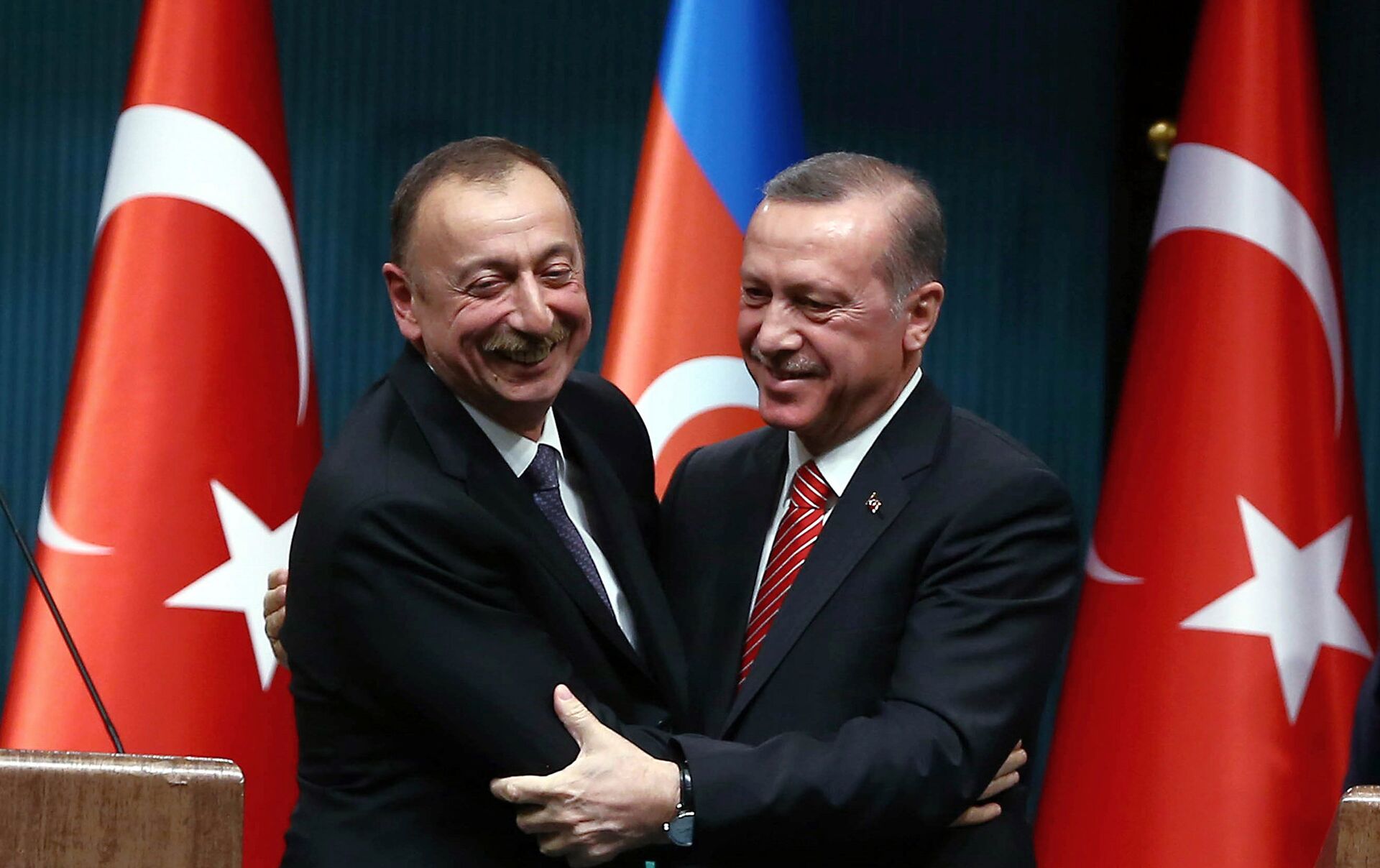Post-war life of displaced residents of Nagorno-Karabakh
The destruction caused by the war forced many residents to leave Nagorno-Karabakh.
More than half a year has passed since the ceasefire was implemented in the unrecognized Nagorno-Karabakh Republic but its residents continue to experience economic and social hardships caused by the war.
The problem of housing for refugees who cannot return to their homes has not yet been resolved. Those who have lost their homes are accommodated in hotels, boarding schools, hostels, as well as rented houses, the costs of which are covered by the state. Many of the local residents who fled to Armenia during the active hostilities cannot return home.
After the war, communications between the region and the outside world became much more complicated, negatively affecting the economic situation there. Many enterprises and service facilities were closed, unemployment increased.
- How are Karabakh residents restoring their businesses after the war?
- Op-ed: Why Azerbaijan risked invading Armenian territory
- What will become of the Zangezur corridor? Comments from Azerbaijan and Armenia
Photo, video: Tigran Gasparyan, Arman Gharajyan
Facts and figures
In the territory that remained under the control of Armenia, 6,943 apartments and private houses were completely destroyed or damaged, of which 4,435 were located in Stepanakert, the government of the unrecognized Nagorno-Karabakh Republic has reported. The authorities deemed 24 districts in Stepanakert and Martuni unrecoverable and a further 58 houses badly destroyed.
According to the Ministry of Urban Development, more than 700 new apartments are planned to be commissioned by the end of 2022 under the program for providing housing for internally displaced persons by the end of 2022.
A 108-apartment residential building is under construction in Stepanakert, and there are plans to build a new residential quarter with more than 200 apartments. A tender has been announced for the construction of 10 new residential buildings with 300 apartments. In the town of Ivanyan, it is planned to build a three-storey building with 160 apartments.
Free housing is provided to migrants – they are settled in hotels and guest houses. At this stage, approximately 1,300 people are being accommodated, the Ministry of Territorial Administration and Infrastructures said. First of all, the housing problems of the families of those killed in the second Karabakh war, disabled, large families, and families of military personnel are being solved.
“Unfortunately, at this moment the process has been suspended due to the lack of available hotels. But families can find other housing or vacate rooms and become beneficiaries of another program, under which the state compensates their rent. These vacated rooms in hotels are then transferred to other citizens who have been left without a home”, said Vache Vardanyan, spokesperson for the ministry.
Payment for housing for temporarily displaced persons, utilities, as well as communications of all local residents is partially taken over by the government – it finances the rent within the established limits.
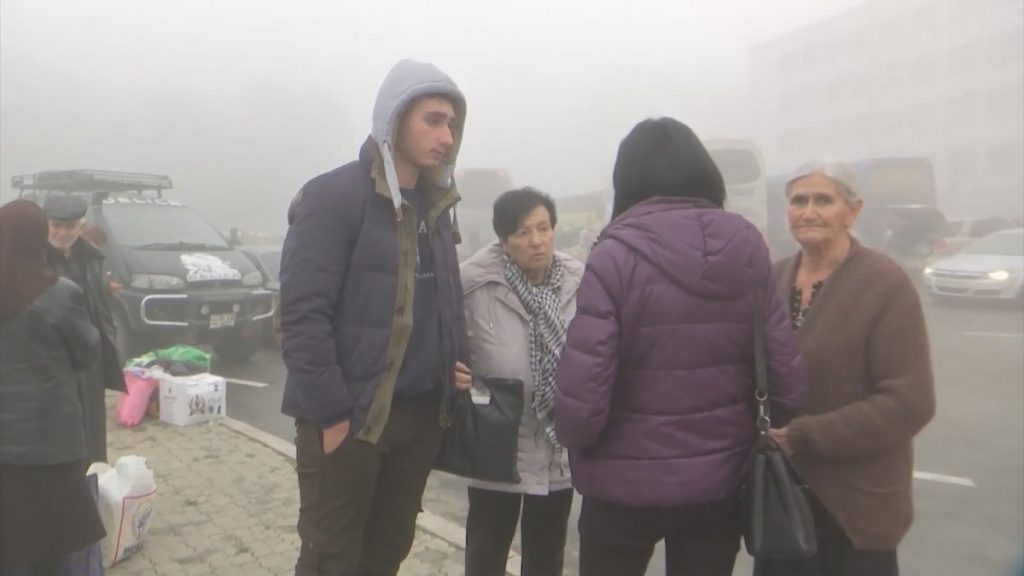
“We were deceived, they said that in three or four days we would return to our village”
“A week before the war, the youngest son completed the renovation of the house in order to get married. He did everything with his own hands, all the preparations for the wedding were ready, we had already agreed with the musicians and rented the hall in Stepanakert, but we didn’t have time, the war began”, says Susanna Sargsyan, a 63-year-old displaced person from Karin Tak village.
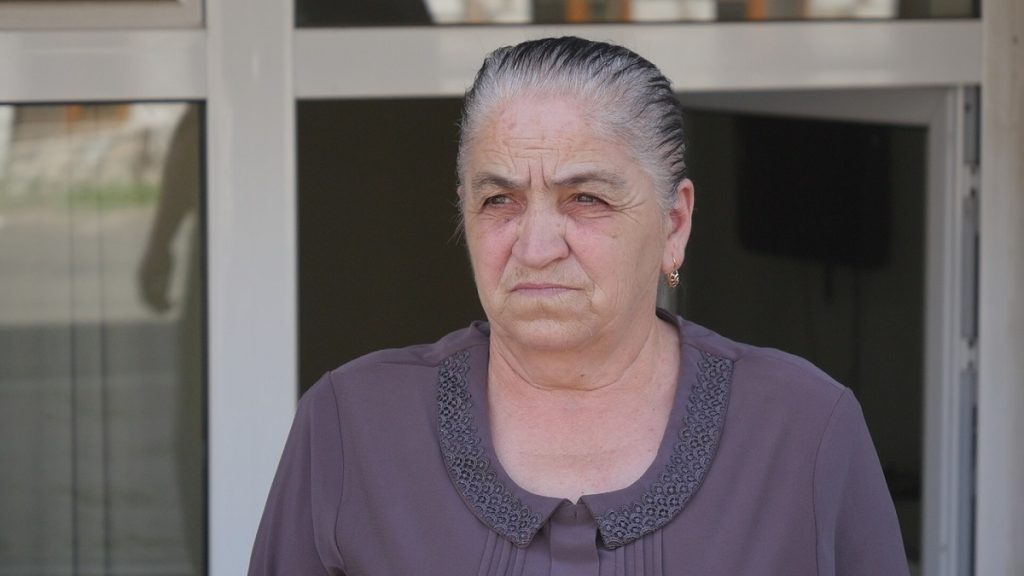
The Sargsyan family from the village of Karin Tak, which came under the control of Azerbaijan as a result of the war, fled to Armenia during the active hostilities of the second Karabakh war.
“Twice we, the militia of Karin Taka, were ordered to leave the village. We thought that this is how they deliberately lure Azerbaijanis in order to finish them off. But they calmly passed through our village in Shushi, and we were taken out of Karin Taka. Moreover, they deceived us, they said that in three or four days we would return to the village, so we didn’t take anything with us”, says the head of the family, Alexander Sargsyan.
In Armenia, a family of 10 was resettled several times – from one settlement to another. In five months, they moved five times. But all the family members wanted to go back and a month ago they left Armenia, although there was nowhere to return to. As a result, the family was moved into a basement office space in Stepanakert. The authorities cover their rent and utility costs.
“The peasants need land, they have to cultivate it, they cannot live on the asphalt. We left our houses, a recreation area, about 3.5 hectares of land and a business in our native village – we had a bar in Shushi. We were engaged in agriculture and animal breeding. We lived in abundance. We are waiting for the release of Shushi, Karin Tak, so that we can return to our home. This is our homeland, we must revive it again, we must return to our homes, even if they are destroyed”.
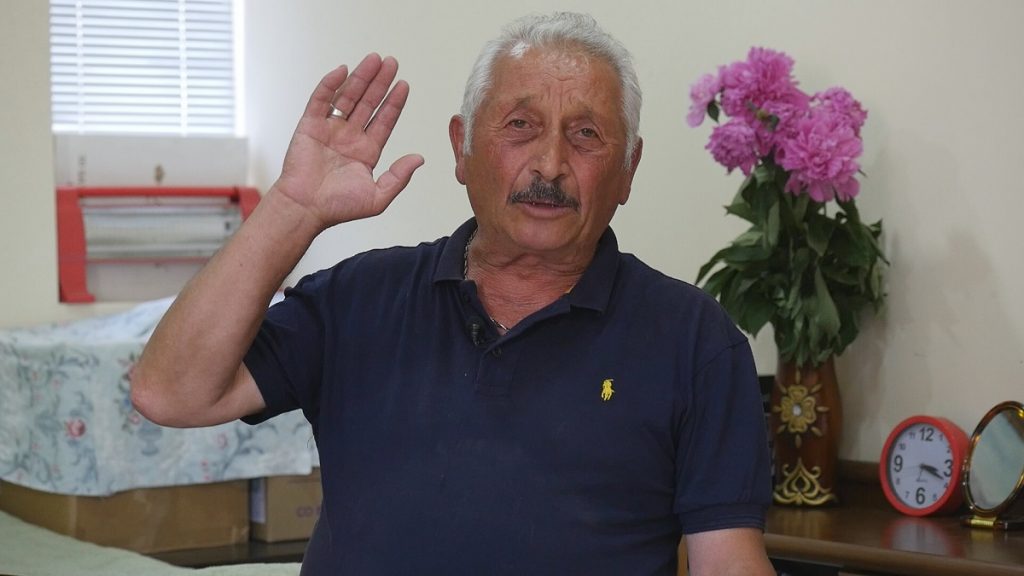
“Victoria will become a symbol of victory”
Stepanakert resident Gayane Aghajanyan was expecting her fourth child and when they began to actively bomb the residential areas of settlements, she realized that she could not stay in the basement with three children.
“My husband was already at the front and was not available. I got into the car with the children, took the underage children of my brother and his wife, and we drove to Yerevan”, Gayane says.
Little Victoria was born in Yerevan, on October 18, at the height of the war. The girl’s name was suggested by friends and other children who decided that it would be a symbol of victory.
“We do not give up on our victory. This day is yet to come”, says Gayane.
After Gayane and her family left, a Smerch shell hit her apartment. The balcony and parts of the children’s room collapsed. Now the apartment is being restored under the government program.
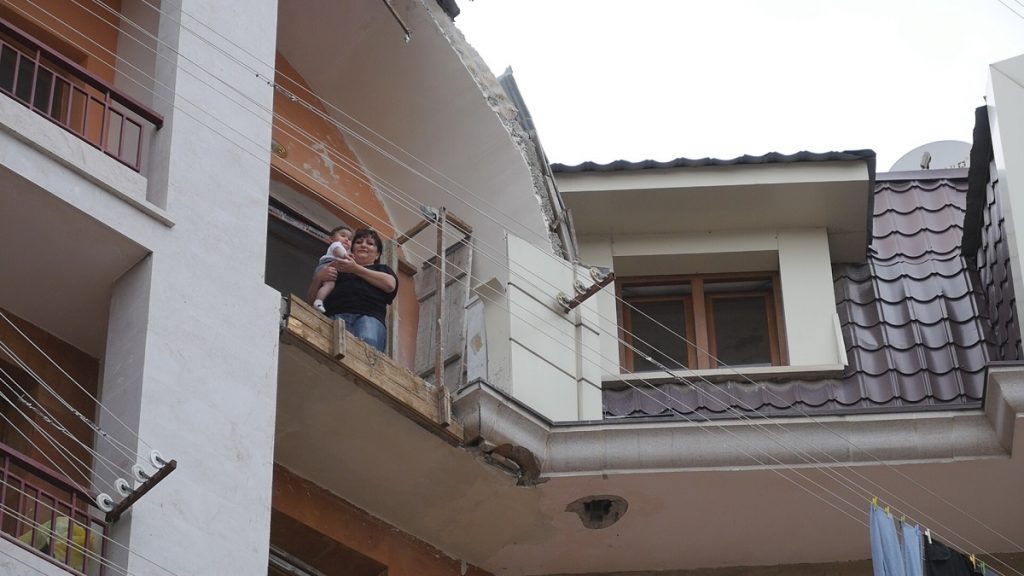
“We fear the future, the fear has come. We do not know what awaits us ahead. It is difficult to realize that we are sitting here, and someone somewhere will decide our fate for us and, perhaps, not in our favor. The peacekeepers are here now, we hope that they will do their job well, but who knows, this is still politics.
They just need to know that if someone somewhere signs an agreement that makes Artsakh a part of Azerbaijan, we will not stay here. Those who make decisions, need to understand this. It is clear what awaits the Armenians there, they may be captured or have to live among the Azerbaijanis”.
Background
Following the signing of a tripartite ceasefire statement of November 9, 2020, Russia sent a peacekeeping contingent into the conflict zones. Peacekeepers are deployed in certain areas along the line of contact, as well as along the Lachin corridor linking Nagorno-Karabakh with Armenia. The contingent will be present there for five years with an automatic extension for a similar period unless one of the parties declares its intention to end their presence in the conflict zone six months before the expiration of the agreement.
After the war, Nagorno-Karabakh found itself more isolated from the outside world – the procedure for the entry of foreign citizens has also changed. From now on, foreigners, except for citizens of Armenia, must first apply to the Foreign Ministry of the unrecognized Nagorno-Karabakh Republic to obtain an entry permit. This information is also passed on to the Russian peacekeeping forces.
The new order applies to all foreign citizens without exception, regardless of nationality. Therefore, citizens of another country, who are originally from Karabakh, do not have the right to come to their homeland without obtaining permission first.
In addition, as a result of the war, Karabakh lost its second road through Karvachar (Kelbajar – az.), connecting it with Armenia. Now the Lachin corridor with several Russian posts along it is the only road to Armenia. Peacekeepers must check the transport and documents of those entering and leaving Karabakh.
“When you don’t have your own home, you no longer care where you live”
Resident of Gadrut Margarita Karamyan says that hostilities in the fall of 2020 began immediately along the entire perimeter of Karabakh, all settlements were under the shelling of the Azerbaijani Armed Forces.
The family was asleep when the first explosions struck. With the first shelling, Margarita and her two children went down to the basement.
However, it became clear to all the locals very soon that the basements would not save them: the drones and the Smerch MLRS were aiming at hospitals, military units and residential buildings.
It was decided to evacuate children and women, but Margarita remained in Hadrut until October 7.
“If we could at least realize that everything would turn out like this, we would have taken something out of our homes. At least photo albums, wedding discs, or documents”, she says.
During the first Karabakh war in the 1990s, Margarita served in the army:
“We kept Hadrut when 40% of NKAO was gone and when 14 villages of the southern wing of the Hadrut region were deported – from May 16 to 19, 1991”.
Now, during this war, the Karamyan family left four of their houses and a greenhouse in Hadrut.
“But the most important thing is that we left our Motherland. We have lost our homeland, where we were born and raised. My ancestors lived there. Specifically, four generations of my family have lived in Hadrut. We lost our past, our life, we didn’t take anything with us”, says Margarita.
35,000 people lost their homes in those territories that came under the control of Azerbaijan. Almost 25,000 of them, according to preliminary data, are now in Armenia.
Margarita and her family now live in Yerevan, she has nowhere to return at this stage:
“Now Karabakh has become so small that it cannot accommodate all the temporarily displaced, there is not enough housing there to provide them all. But also fear, insecurity, make people not want to go back yet, although I don’t think it’s safer in Armenia. But when you don’t have your own home, you don’t care where you live – in Armenia, in Russia or in some other country. Everywhere it is not your home, and if not your home, you don’t care where you live”.
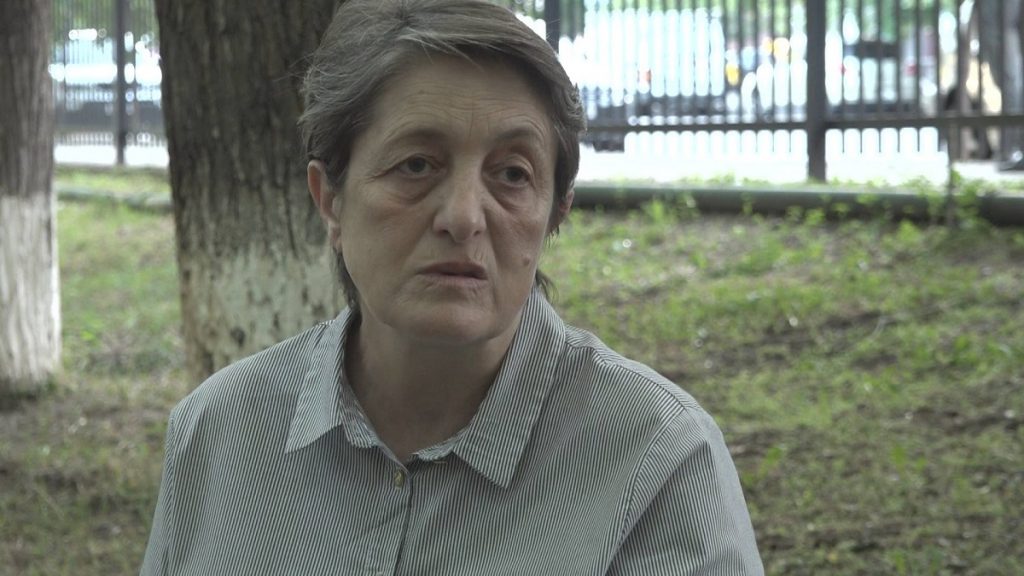
Margarita established an organization in Yerevan, which deals with the rights of migrants from Hadrut. According to her, people say that they want to return only to Hadrut, only to their home.
“Let it be ruins, let nothing be there, only walls, but it will be Hadrut, and these will be our walls. We will rebuild everything again, we will live in our house and on our land. We will return to Hadrut, we will definitely return there”, says Margarita.
“Estimate losses and contact international organizations”
In the unrecognized NKR after the war of 2020, the worst situation has developed since its independence, economist Tatul Manaseryan believes:
“Prior to the 44-day war, the past few years in Karabakh experienced double-digit economic growth. After the war, it is very difficult to restore even state management. It is necessary to assess the losses, risks and threats to economic security that remain relevant, clarify priorities and develop a program for economic integration between Artsakh and Armenia”.
The most pressing issue here is stability, the preservation of peace, the issue of security. The projects that are currently being implemented are financed by Armenia and the Hayastan All-Armenian Fund.
“Artsakh needs to turn to international organizations in order to get funds for survival. They work not only with recognized but also with unrecognized states”, Tatul Manaseryan said.
Supported by RLNE










